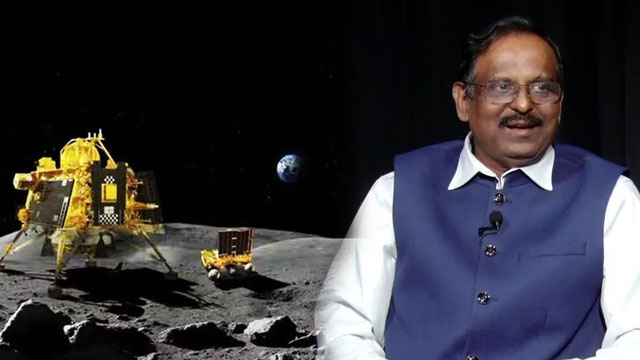Daijiworld Media Network - Kolkata
Kolkata, Nov 16: In what is poised to be one of its busiest phases, the Indian Space Research Organisation (ISRO) is gearing up for seven additional launches before the end of the current financial year, ISRO chairman V Narayanan confirmed. With India’s maiden human spaceflight mission on track for 2027, the space agency is preparing for an ambitious expansion in science, technology and industry capacity.
Narayanan revealed that the upcoming launches include a commercial communication satellite along with multiple PSLV and GSLV missions. A landmark moment will be the launch of the first-ever PSLV fully manufactured by the Indian private industry, marking a decisive step in India’s space-sector reforms.

He also confirmed government approval for Chandrayaan-4 — a challenging lunar sample-return mission targeted for 2028. The mission aims to bring moon samples back to Earth, a feat achieved so far only by the US, Russia and China. Alongside this, ISRO is pushing ahead with LUPEX, a joint mission with Japan’s JAXA to study water ice at the Moon’s south pole.
ISRO is working to triple its annual spacecraft output within three years to keep pace with its expanding mission load. Parallelly, construction of the Indian Space Station is underway, with the first of its five modules scheduled to be placed in orbit by 2028. The full station is expected to be operational by 2035, positioning India among the select nations capable of sustaining long-term human presence in space.
On Gaganyaan, Narayanan clarified that timelines remain intact: while uncrewed test missions have shifted, the first crewed mission continues to be slated for 2027. Three uncrewed flights are planned ahead of sending Indian astronauts into space.
He added that Prime Minister Narendra Modi has directed ISRO to lay the groundwork for a future crewed lunar landing mission by 2040, aligning India with other global space powers — the US under its Artemis programme and China with its 2030 lunar target.
India’s space economy, currently valued at USD 8.2 billion, is projected to rise sharply to USD 44 billion by 2033. Narayanan said ISRO is working to increase India’s share in the global space market from 2% to 8% by 2030. The global space economy itself, estimated at USD 630 billion today, is expected to touch USD 1.8 trillion by 2035.
The ISRO chief highlighted the rapid growth of India’s private space ecosystem, now boasting over 450 industries and 330 startups — a massive leap from just a handful a few years ago. He said this surge, spurred by reforms introduced in 2020, has transformed India into a vibrant and competitive space hub poised for further expansion.